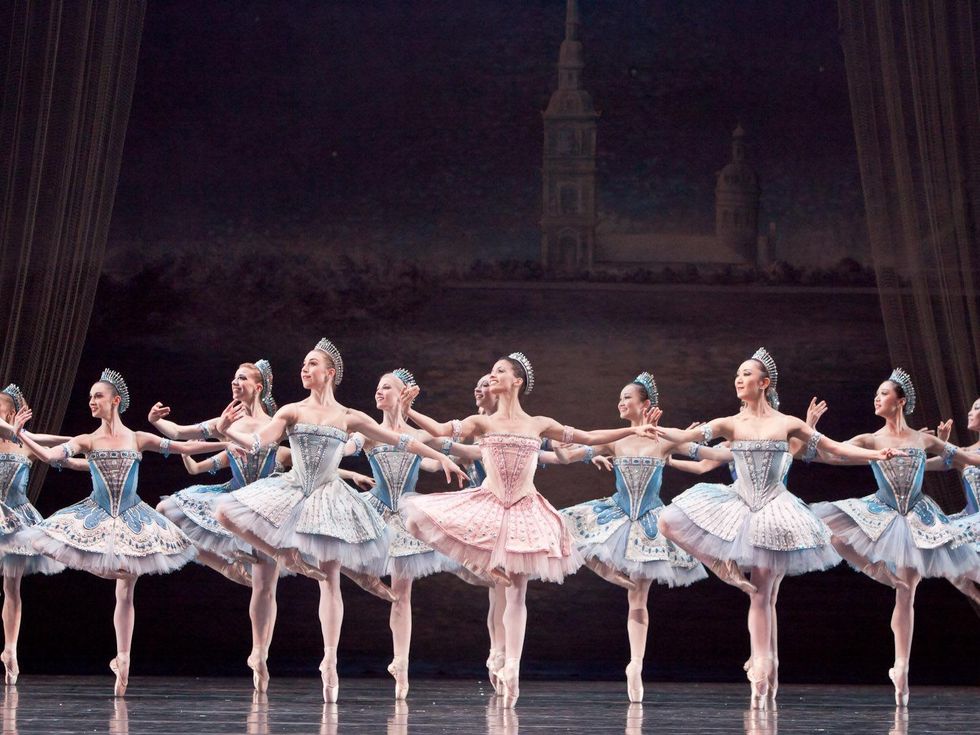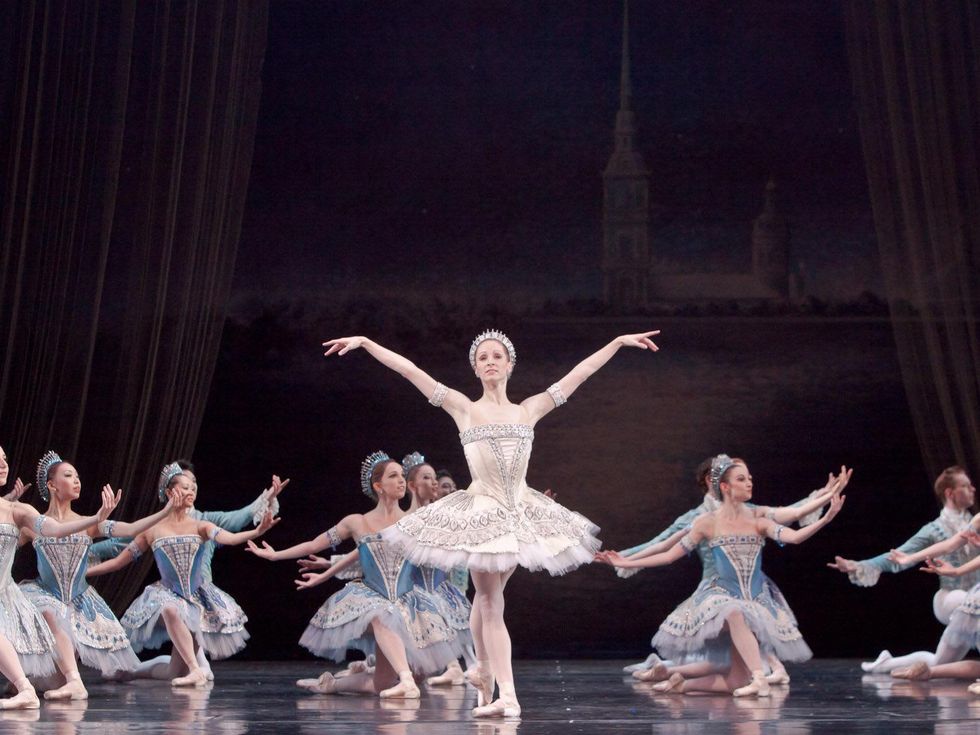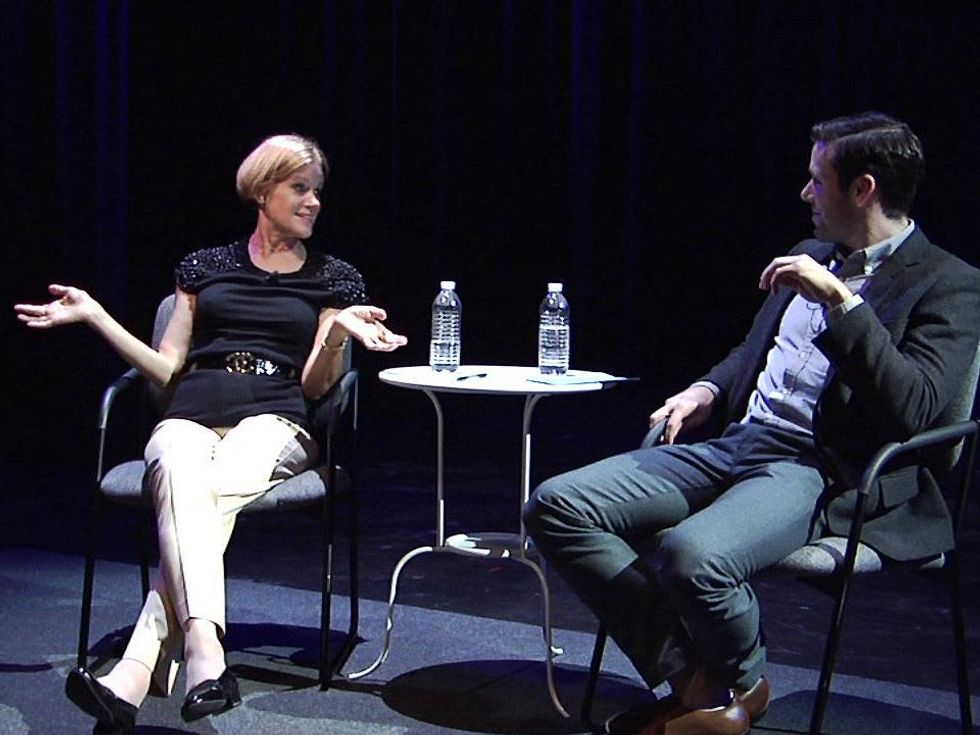The Arthropologist
A famous dancer crushes on Houston: Where great ballet happens
There's nothing like a double dose of Vitamin B this time of year, as in Ballet + Balanchine. A big blast of Balanchine clears out the cobwebs in my brain like magic.
It has to do with the confluence of pattern, speed and gloriously ingenious choreography.
The medicine is delivered via Houston Ballet's performance of Balanchine's Ballet Imperial, his tribute to St. Petersburg, Peter Ilyich Tchaikovsky and Petipa, the father of ballet. The performance is part of Journey with the Masters, which runs through June 9, and also includes Jerome Robbins' hilarious spoof on the audience, The Concert, and Jiří Kylián’s signature piece, Sinfonietta.
If your ballet levels are low, this program promises an instant cure.
Vintage Balanchine to the Rescue
Ballet Imperial was created for American Ballet Caravan (this was before New York City Ballet existed), and it premiered at the Teatro Municipal in Rio de Janeiro in 1941. Set to Tchaikovsky's Piano Concerto No. 2 in G major, Op. 44, the ballet offers 36 minutes of delicious dancing for two principals, three soloists and 24 corps de ballet dancers.
The feeling in the room during rehearsal was one of reverence and full attention.
This may be vintage Balanchine, but it packs a wallop, both in terms of its profound musicality and the pure kinetic rush of the choreography. The corps de ballet does much of the heavy lifting here, sweeping into vortexes and other complicated configurations that take complete attention to spacing. The whirling motions of the corps actually tells us where to look.
Balanchine is sneaky that way. He likes to direct our attention.
It's ballet spectacle at its highest, and also one of the first Balanchine ballets that Houston Ballet chief Stanton Welch saw live. (Ballet people imprint on Balanchine, just so you know. For me, it's Serenade.) Welch tries to bring a new Balanchine work to the repertory every year so that the dancers can grow in this style. And that they have, thanks to the expects on hand, such as Victoria Simon, who set the work, and the legendary New York City Ballet ballerina Merrill Ashley, who coached.
A Master Returns
"You must turn out ladies," Ashley says the women of Houston Ballet, while they are furiously dancing through the ballet's super speedy moves. Ashley would be first tell you that this is not an easy ballet. The celebrated ballerina set Ballo della Regina on the company in 2010.
Although she traipses the globe setting Ballo della Regina, coaching Balanchine is what she loves best. Known as Balanchine's last muse, Ashley's 31-year career took place under Balanchine's tutelage. Ashley moved to New York City at age 12 and joined the New York City Ballet Company in 1967 at 16. In 1974, she was promoted to the rank of soloist, and three years later she became a principal dancer.
"I love coming here. The work ethic is strong. The dancers are so eager and willing to work."
Ballo della Regina and Ballade were created on Ashley, and highlight her amazing technical skills, which include fleeting footwork and delicate hops on pointe.
"You must travel," insists Ashley, getting up to demonstrate how best to cover enormous amounts of stage space in very little time. She's full of great advice for the dancers on how to do some of these seemingly impossible steps. "Keep the arms close to the head," she tells them, relaying a precious tip on how to do a super quick port de bras.
The feeling in the room during rehearsal was one of reverence and full attention. Everyone knows they were in the presence of a great Balanchine ballerina, yet they are here to learn, not fawn over a famous dancer. The dancers seem to be having fun, hanging on Ashley's every word and laughing at her jokes.
"Those are nasty steps," she tells the women, knowing full well that the speed and precision required to do them well is about as difficult as it gets.
She is happy to be back in Houston. "I love coming here," she says. "The work ethic is strong. The dancers are so eager and willing to work. They always dance full out."
Watching the transfer of Balanchine's glory is such a reminder of how a legacy like ballet carries through time. Houston Ballet is lucky to be working with someone like Ashley, who lived and breathed these great ballets. There will come a time when that is no longer possible, yet ballet people have done a remarkable job keeping their astonishing legacy intact.
Ashley understands the importance of her role without being too precious about it. A ballet is not a fixed thing, even if we think it is.
"I remember watching Balanchine change something in Symphony in C," Ashley says. "I was sitting with three dancers, we all thought he changed a different thing."
Every Balanchine ballerina had a different experience.
The details may vary from performance to performance, just as they did during Balanchine's time, but the heart of the ballet will remain full and beating with a pulse that is at the center of American ballet.
Watch Merrill Ashley nail those hops on pointe in Ballo della Regina







